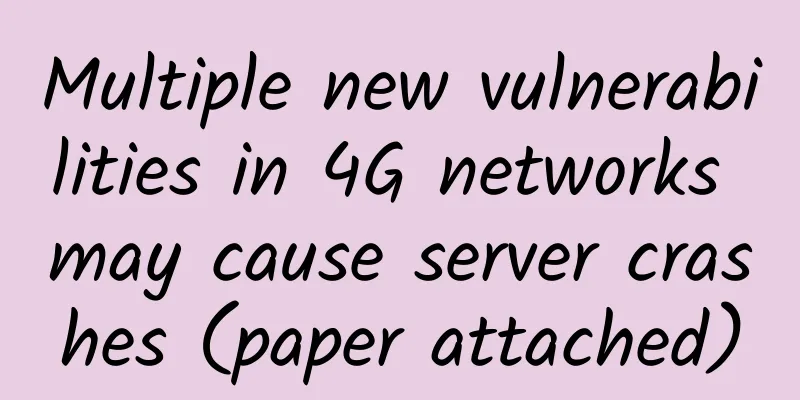Cloud + AI, Huawei Enterprise Communications Makes Connections Ubiquitous

|
[Original article from 51CTO.com] Traditional enterprise communications are mainly to meet the basic communication requirements of enterprises. However, in the era of digital transformation, enterprises’ demand for communications is no longer just a communication tool for the enterprise, but has become a core platform to promote enterprise efficiency improvement, product and service innovation, and business model transformation. Nowadays, with the continuous deepening of enterprise digital transformation, it has become a consensus among enterprise managers to improve communication and collaboration efficiency with the help of new enterprise communication technologies. At the same time, under the catalysis of new generation ICT technologies such as cloud computing, artificial intelligence, and 5G, enterprise communications are constantly evolving. At the Huawei China Ecosystem Partner Conference 2019 held recently, Huawei Enterprise Communications comprehensively demonstrated new enterprise digital communication and collaboration solutions, and conducted in-depth discussions on how enterprise communications can continue to evolve in the era of digital office. Innovation and change: actively embrace cloud transformation In order to better meet user needs, Huawei has been innovating and changing in line with the development of the times, actively exploring the integration of new technologies and enterprise communications, and building a one-stop, fully connected, full-scenario, intelligent enterprise communications platform. "Huawei's current enterprise communications have evolved into 3C+3B. 3C stands for three cloud services: cloud conferencing, cloud contact center, and digital office. 3B stands for the new generation of terminals, which integrate AI intelligence, remote collaboration, and 4K ultra-clear, completing a comprehensive upgrade of the previous generation of terminals." said Sun Quan, general manager of Huawei's enterprise communications.
Sun Quan, General Manager of Huawei Enterprise Communications Compared with traditional enterprise communication services, the cloud service model makes the user experience simpler and provides users with more comprehensive services. Traditional services are sold offline, while cloud services can be purchased online, and enterprise communication terminal products can also be purchased online in packages. After users quickly complete activation and activation, they only need to perform the simplest business management and do not need to worry about the operation and maintenance and upgrade of the platform. However, it is undeniable that the transformation of enterprise communication platforms to the cloud still faces many challenges. Peng Xiaodong, general manager of Huawei's China Enterprise Cloud Communication Solution Sales Department, believes that the challenges mainly come from two aspects: users and channels. On the user side, since the speed of cloud transformation of Chinese enterprises lags behind that of developed markets, users still have concerns about the security of the cloud; secondly, how to coordinate and be compatible with the cloud for old equipment is a difficult point; thirdly, after leaving the private network, whether the stability and business experience of enterprise communication services based on the public network environment can be guaranteed. In terms of channels, in the traditional enterprise communications market, enterprises are segmented more finely. After the cloud transformation, the entire sales are flattened, and the pace of cloud transformation may be slower due to the channels' own interests. "The cloud transformation of enterprise communications is an irreversible trend. We will actively embrace change and provide protection for users in terms of security, compatibility, business reliability, etc. At the same time, we will give more benefits to our partners through transparent channel policies and jointly build a cloud ecosystem." Peng Xiaodong emphasized.
Peng Xiaodong, General Manager of Huawei China Enterprise Cloud Communications Solutions Sales Department Continuous evolution: Integrating AI to make enterprise communications intelligent In order to provide smarter communication, better decision-making, and improve employee productivity, it is inevitable to integrate AI technology with enterprise communications. The reporter learned that Huawei's new generation CloudLink has realized a full-scene AI experience, including: voice assistant, speaker tracking, face sign-in, electronic nametag and other artificial intelligence technologies, while integrating a remote interactive collaboration whiteboard to provide a new user experience for conference collaboration. "Huawei Enterprise Communications is leading the industry from the beginning with AI." Sun Quan said: "Huawei has made strategic investments and research and development in AI technology, providing full-stack AI platform capabilities. In addition, Huawei's cooperation with leading companies in the industry has made it the forefront of the industry in terms of user experience and forward-looking product research." Outlook for 2019: China’s market share increased to 45% "Enterprise communications are no longer limited to being a tool for corporate communication and collaboration, but have evolved into an enabling platform for industry production applications and a tool for value creation." Peng Xiaodong pointed out that Huawei Enterprise Communications currently has more than 80 partners in the fields of digital government, safe cities, smart finance, telemedicine, and education, with dozens of industry-leading solutions. These are all future value markets and can provide benefits to society and people's livelihood. Now, Huawei Enterprise Communications has been the market leader in China for six consecutive years, accounting for nearly 40% of the market. Many industry users choose Huawei Enterprise Communications as their first choice. Peng Xiaodong revealed: "In 2019, we hope to further transform in two aspects: one is to complete the cloud transformation, and the other is to sink the business to cities. Ultimately, through transformation, we will increase our market share to 45% in 2019." Sun Quan also said: "In 2019, we will continue to launch new products, further improve product strategies, expand market space, and achieve the business goal of a growth rate of more than 20%." It is reported that Huawei's enterprise communication cloud service achieved large-scale commercial use in China in 2018. In 2019, Huawei will deploy Huawei cloud nodes in Hong Kong, and Huawei's enterprise communication cloud service will cover Southeast Asia. For the European market, Huawei chooses to cooperate with local operators to implement communication cloud services, such as France Telecom OBS. In addition, in the second half of 2019, Huawei will start deployment in South Africa and Latin America. At the end of the interview, Sun Quan concluded that enterprise communications used to connect people, but now it has gradually evolved into connecting things and data. "We have turned communication capabilities into a platform technology and a service, and provided it to users. Our cloud services can be directly called in the system just like using water and electricity; AI is also a service that can be interconnected with other platforms through standardized interfaces. This will change the entire enterprise communications industry and make connectivity ubiquitous and all-encompassing." [51CTO original article, please indicate the original author and source as 51CTO.com when reprinting on partner sites] |
<<: How to build a secure HTTPS site step by step
>>: What is the difference between 5G and 5GHz Wi-Fi?
Recommend
The difference and application of single-mode fiber and multi-mode fiber
Fiber optics can transmit data faster and over lo...
Cisco's "World Internet of Things Day" special event brings Internet of Things education to Beichuan
On the occasion of the first "World Internet...
Thoroughly understand Session and Token
Hello everyone, I am amazing. When building a use...
Which collaboration metrics determine the business value of an application?
The criteria for evaluating the business value of...
Next-generation network management is difficult without AIOps
AI for operations, or AIOps platforms, is the in...
Ministry of Industry and Information Technology: my country's 5G mobile terminal connections reached 365 million, accounting for more than 80% of the world
On August 3, at the 2021 Global Digital Economy C...
Zhang Jinrui, Beijing Municipal Bureau of Economics and Information Technology: Beijing accelerates 5G gigabit network applications to create a new benchmark for the digital economy
At the "Third 5G Gigabit Network Industry Fo...
Why not take a shortcut to achieve security? OneDNS protects school network security in the cloud!
There is a place that gathers the most energetic ...
5G will become the golden key to open the era of the Internet of Things
The Internet of Things is not new. At the beginni...
How will 5G technology change application development?
Technology is constantly evolving, and it's e...
5G, how is the construction going?
Nowadays, everyone knows about 5G. 5G has taken o...
A 100% timeout murder caused by maxing out the bandwidth!
[[421757]] Verse: Do not advise others to do good...
Global 5G commercial networks have reached 169 continents and are now covered
[[407907]] According to the latest report from GS...
On the first day after Double Eleven, I heard that programmers all went here to "carnival"...
November 12, 2017, 2:00 p.m. The autumn is crisp,...





![[New Year's Day] RackNerd: $11.49/year-1GB/21G SSD/1.5TB@1Gpbs/San Jose & Los Angeles & Seattle data centers](/upload/images/67cabca069250.webp)



